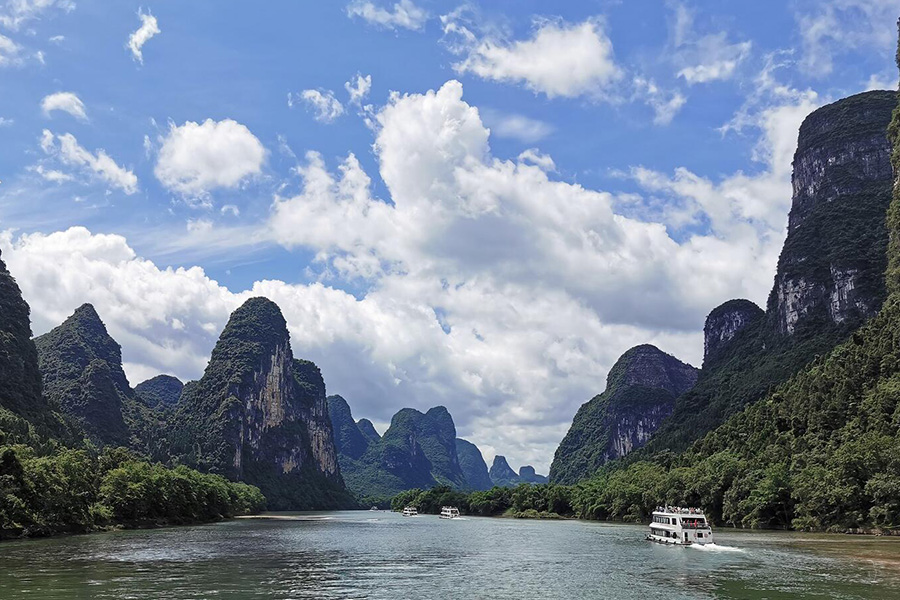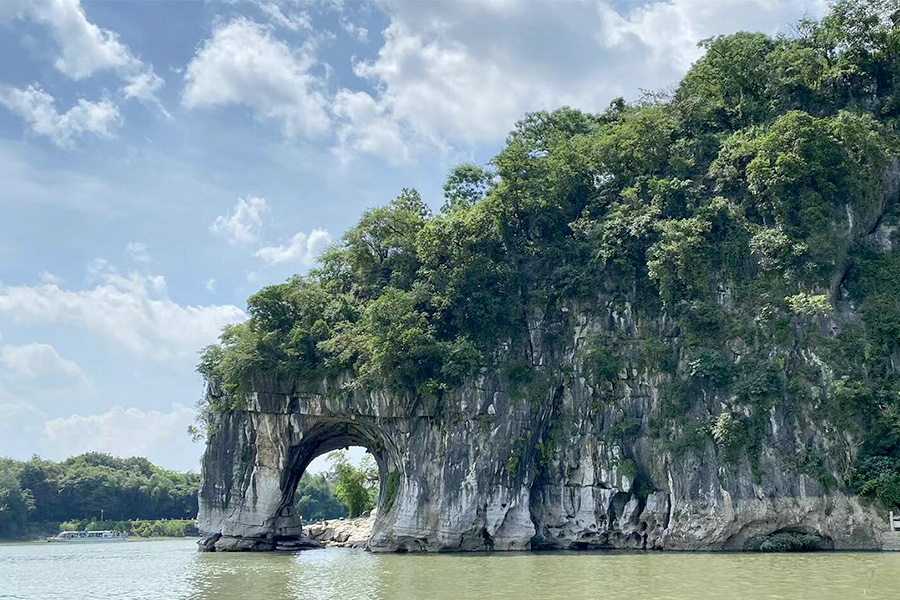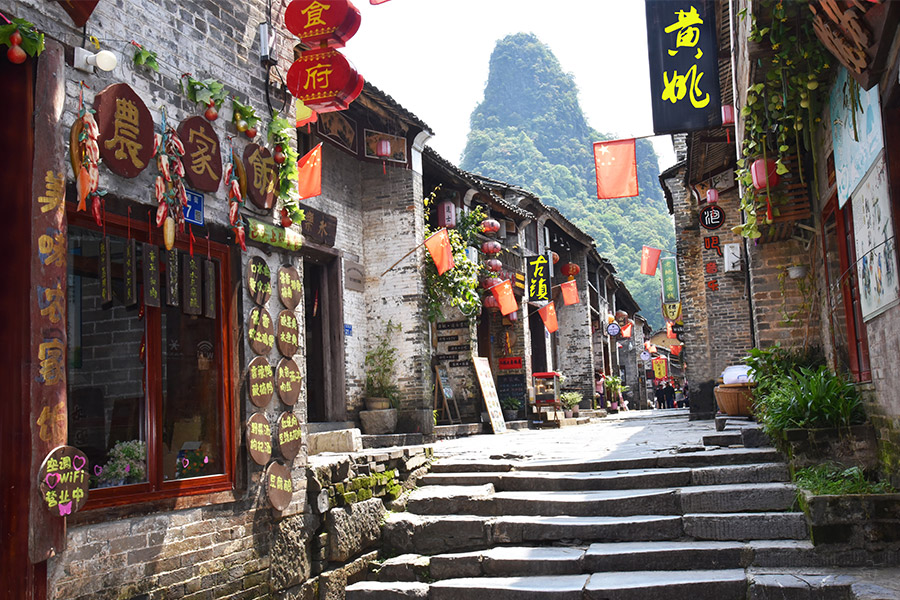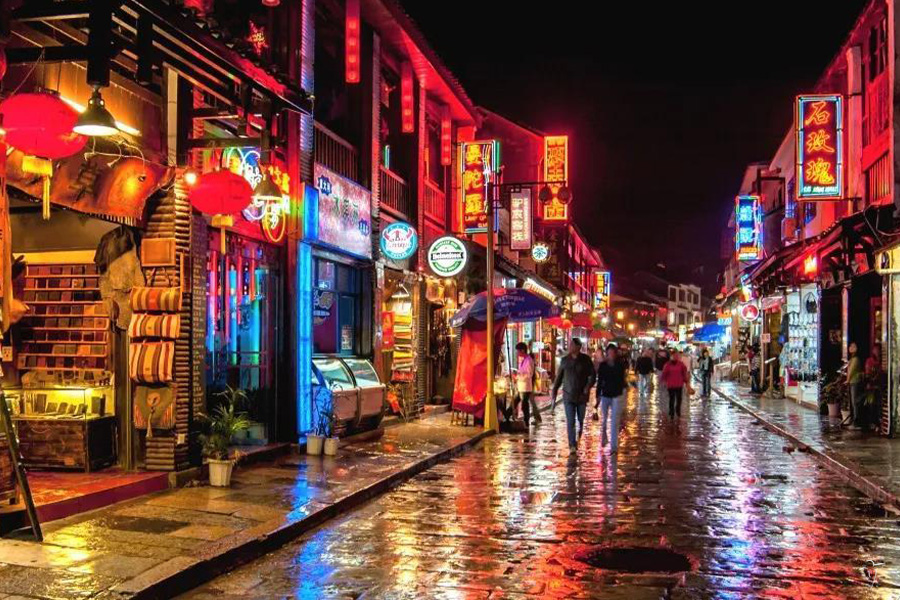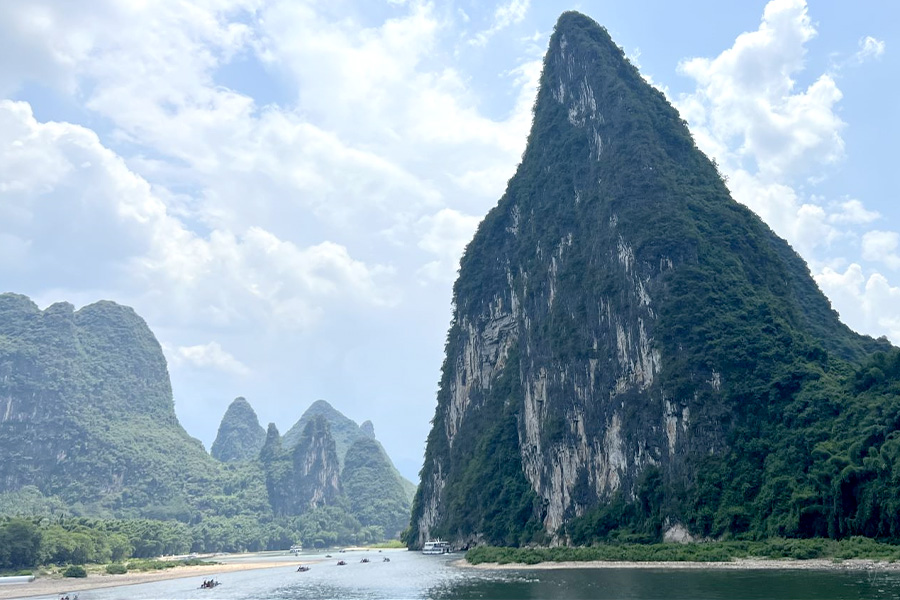Lingqu Canal, Xing'an, Guilin
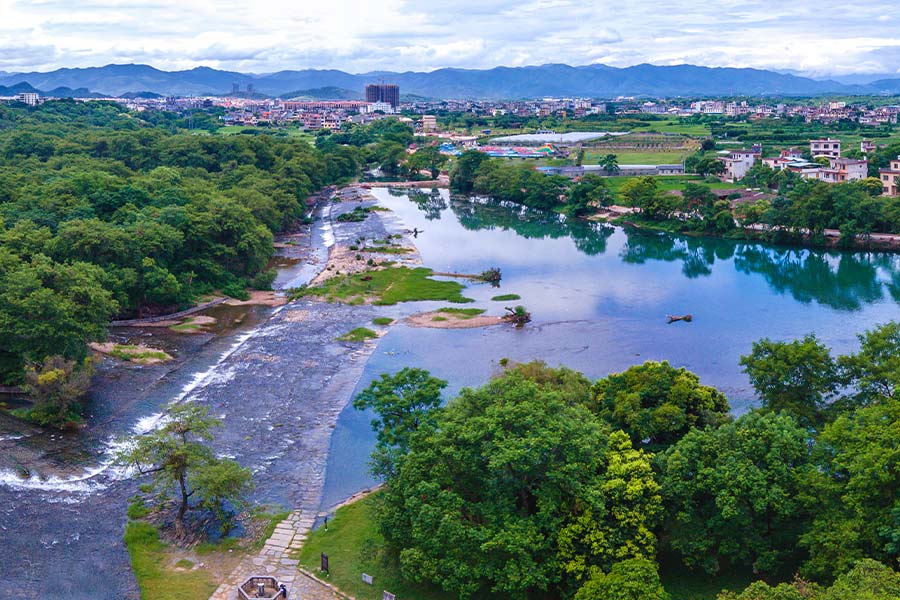
The saying goes that north China has the Great Wall, while south China has the Lingqu Canal. The Lingqu is located in the northern part of Guilin in the county of Xing'an, built in the Qin dynasty, the Lingqu canal is the most complete existing ancient canal in the world, together with the Dujiangyan Irrigation System in Sichuan and Zhengguo Canal in Shaanxi. The Lingqu Canal connects the Xiang River and the Li River with the Yangtze and the Pearl River Delta in Guangdong. Despite it being built thousands of years ago the canal structure is still studied by scientists now and engineers seeking to understand its structure which was well ahead of its time.
The Lingqu Canal has been playing an extremely important role in the aspect of water conservancy. It, together with the Dujiang Weir of Sichuan and the Zhengguoqu Canal of Shaanxi, composes the famous "Three Water Conservancy Projects of the Ancient China". Because of the development, maintenance and improvement in every dynasty in the history, the Lingqu Canal has been playing an important water conservancy function up till now, irrigating fields up to 30000 odd mu (1 mu = 1/15 hectare).
Contemporary Chinese scholar Guo Morou commented that the Lingqu Canal: "echoes with the Great Wall in the north, it is truly one of the wonders of the world". Lingqu spans a total length of 37.4kilometres including the canal mouth, the north canal and the south canal component. The Lingqu canal was designed using the most advanced technology of the Qin dynasty and was an important means of the Qin emperor gaining a foothold in South China. The Lingqu canal is not only home to amazing structural engineering and design but also of picturesque scenery with both banks of the canal teeming with animal and bird life as well as being rich in vegetation. The Shuijie Pagoda, the numerous ancient bridges spanning the river and the bustling market town of Xing'an are all enjoyable highlights. The Lingqu canal is already well renown in Guilin and represents one of the pearls in in the Guilin traveling experience.
The ingenious design of the Lingqu Canal combined the functions of drainage, water conservancy and transportation, and the concepts of war and peace. With the most optimized innovative design according with the practice, the Lingqu Canal - the canal which is praised by people of the later generations as blessed by the gods was built in a short term, which could not be imagined at that time. The Hua Dyke which is the main project of the channel head is a dam in the form of Chinese character "人". The part leaning to the south canal is called the Xiaotianping, and the part leaning to the north canal is called the Datianping. Lingqu canal also include attractions such as the tomb of three generals, the 'flying stone' and the 'four virtuous ancestral halls'. The whole Lingqu canal district invoked an intense sense of history, the Lingqu canal has a character and style all of its own.
The Hua Syke is of course one of the critical and most spectacular components of the Lingqu canal, it is divided into seven dykes that flow into the Xiang River system and a further three dykes that flow into the Li River system. Parallel to the canal are two other dykes. The total area of the canal mouth including the north and south dykes is over 1000 metres.
The Grand Qin Dyke is the centerpiece of the Lingqu canal, built at the height of the Qin dynasty the Grand Qin Dyke principally controls the release of water into the Xiang River system. The dyke at its widest spans a length of 10 meters. The most ingenious aspect of the dyke is that its design has been effectively preventing major flooding in Xing'an for centuries. The 10 kilometer causeway running parallel to the dyke is itself amazing panorama scenery including: the Wanly Bridge, the tomb of three generals, the Su Family Bridge, and the four virtuous ancestral halls.

The 'flying stone' is one undoubtedly one of the highlights of visiting the Lingqu canal; the stone, 4 metres high with a 20 meter base is enormous, it is smooth and has a set of stairs chiseled into it and is surrounding in sweet-smelling osmanthus flowers. The fable goes that the rock was a key part of a battle between a great general and a demon, and was eventually through magically means flew from Sichuan and came to rest at the Lingqu canal.
Shui jie (or 'Water Street') is one of the liveliest parts of the Lingqu Canal and has developed a charm and feel all of its own. It has captured and retained the unique characteristic of both the Qin and Han dynasty including a plethora of ancient bridges, sculptures, tea-houses and marketplaces. At dusk the banks of the canal that flows through Shui Jie is dotted with brightly lit lanterns, illuminating the gentle-flowing water, as if you have reached the lower-reaches of the Yangtze river, a truly amazing experience.
Guilin tours
Quick Questions
Our team is waiting for your questions. Please feel free to ask us any questions you might have about our China package tours, Chinese culture, or the sites available. We will gladly help you with any special needs you might have and all questions, like our trip designing is completely free of charge.



